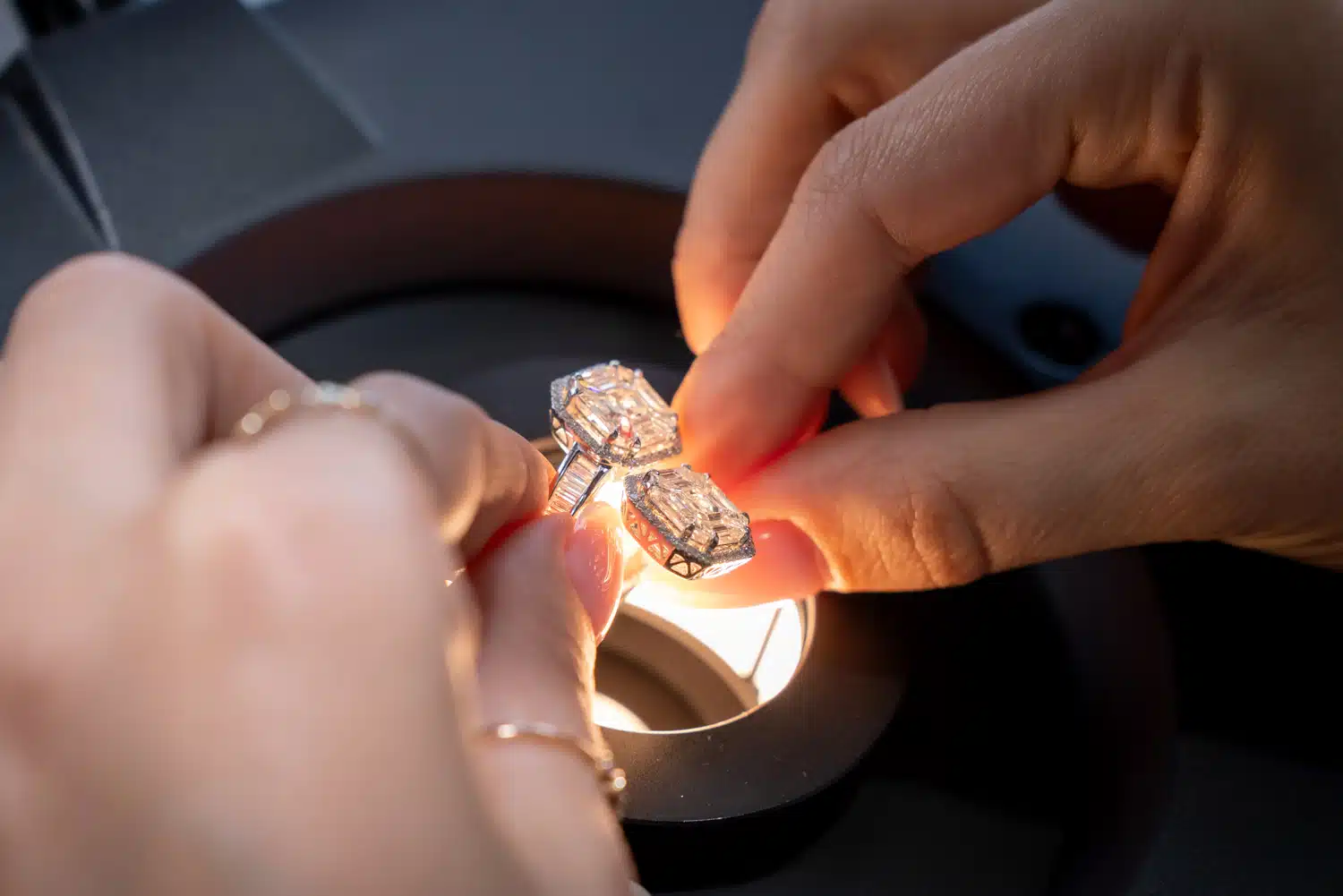Diamonds have long been regarded as a symbol of eternal love and luxury. However, with the rise of technology, a new player has entered the diamond market: lab-grown diamonds. While they share many similarities with their natural counterparts, there are distinct differences that set them apart. In this article, we will explore the differences and similarities between lab-grown diamonds vs real, helping you make an informed choice.
Table of Contents
Understanding the Basics
What Are Lab-Grown Diamonds?
Lab-grown diamonds, also known as synthetic or cultured diamonds, are created in controlled environments using advanced technological processes. There are two primary methods for producing lab-grown diamonds:
High Pressure High Temperature (HPHT): This method mimics the natural conditions under which diamonds form. It uses high pressure and high temperature to create diamonds that are virtually identical to natural ones.
Chemical Vapor Deposition (CVD): This technique involves creating a diamond layer by layer from a carbon gas. CVD diamonds are known for their exceptional clarity and can be produced in various colors.
What Are Real Diamonds?
Real diamonds, often referred to as natural diamonds, are formed over millions of years deep within the Earth’s mantle under extreme pressure and temperature. They are extracted through mining operations and are valued for their rarity and natural origin.
Key Differences Between Lab-Grown and Real Diamonds
Origin and Formation
One of the most significant differences between lab-grown and real diamonds is their origin. Natural diamonds are formed over geological timescales, making them rare and valuable due to their scarcity. Lab-grown diamonds, on the other hand, are created in weeks or months in a laboratory setting. While they are chemically and physically identical to natural diamonds, their creation process is much faster and more controlled.
Cost
Lab-grown diamonds are typically more affordable than natural diamonds. The lower cost is primarily due to the fact that lab-grown diamonds are produced in a controlled environment, which reduces their rarity and extraction costs. This affordability makes lab-grown diamonds an attractive option for those seeking high-quality diamonds without the high price tag.
Environmental and Ethical Considerations
The environmental impact of diamond mining has been a growing concern. Traditional diamond mining can cause significant environmental damage, including habitat destruction and water pollution. Lab-grown diamonds offer a more sustainable alternative, as they do not require mining and have a lower environmental footprint.
Ethically, lab-grown diamonds are also considered a better option. Natural diamond mining has been associated with human rights abuses and conflict financing. Lab-grown diamonds, being free from these issues, provide an ethical choice for consumers who are concerned about the origins of their jewelry.
Quality and Appearance
In terms of quality, lab-grown diamonds and natural diamonds are virtually indistinguishable. Both types of diamonds can exhibit the same range of colors, clarity, and cut. Lab-grown diamonds are often graded using the same criteria as natural diamonds, including the Four Cs: Carat, Cut, Color, and Clarity.
Market Perception and Value
While lab-grown diamonds offer numerous benefits, they do face challenges in terms of market perception. Natural diamonds have long been associated with luxury and are often perceived as more prestigious due to their rarity and historical significance. Lab-grown diamonds, despite being of comparable quality, are sometimes viewed as less valuable because they are not as rare.
Choosing Between Lab-Grown and Real Diamonds
Personal Preferences
Choosing between lab-grown and real diamonds ultimately comes down to personal preference. If you prioritize environmental sustainability, ethical sourcing, and cost-effectiveness, lab-grown diamonds are an excellent choice. On the other hand, if you value the traditional aspects of diamond ownership, such as rarity and historical significance, a natural diamond may be more appealing.
Jewelry Applications
Both lab-grown and real diamonds can be used in a variety of jewelry applications, including engagement rings, necklaces, earrings, and bracelets. When selecting a diamond, consider the design, setting, and personal style to ensure that the chosen diamond complements your preferences.
Investment Value
If you are considering diamonds as an investment, natural diamonds may offer better long-term value due to their rarity and historical significance. Lab-grown diamonds, while high-quality and affordable, may not hold the same investment potential as natural diamonds.
Conclusion
Lab-grown diamonds and real lab diamonds each offer unique advantages and characteristics. Lab-grown diamonds provide a more sustainable, ethical, and cost-effective option, while natural diamonds hold traditional value and rarity. Understanding the differences and similarities between these two types of diamonds will help you make an informed decision that aligns with your personal values and preferences. Whether you choose a lab-grown or natural diamond, both options can provide timeless beauty and brilliance for your jewelry collection.
